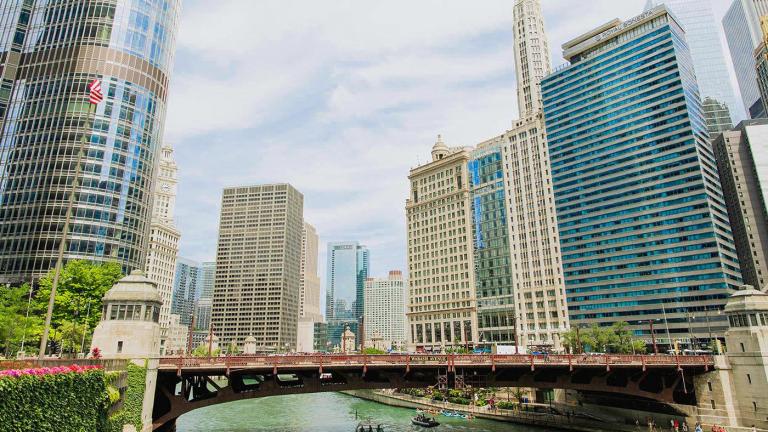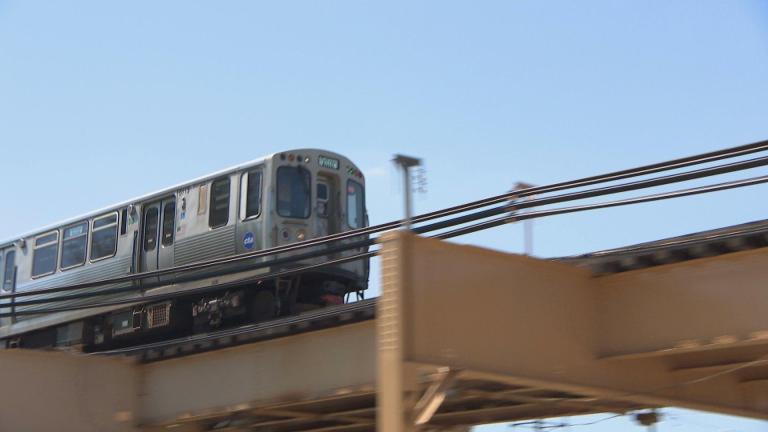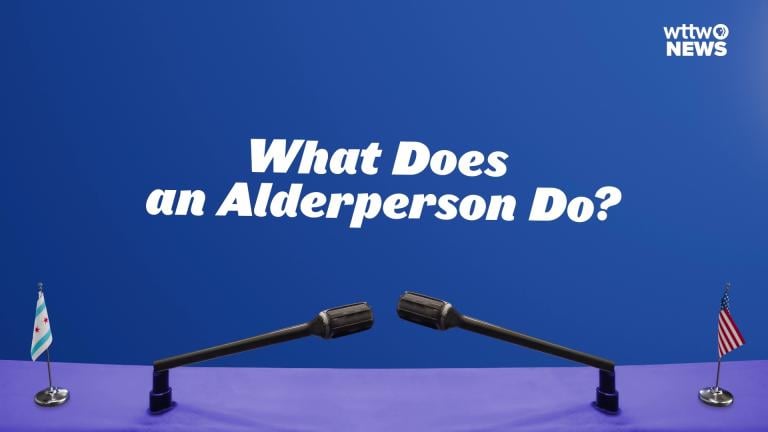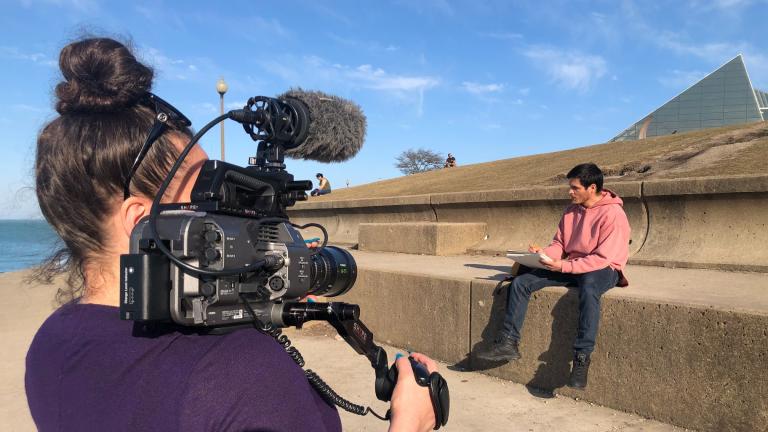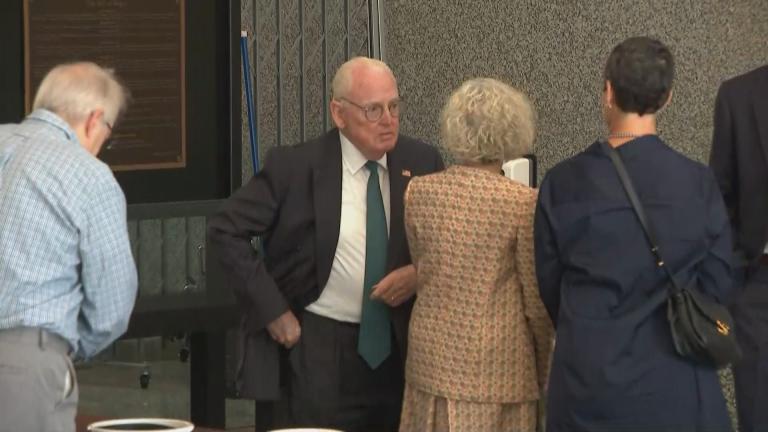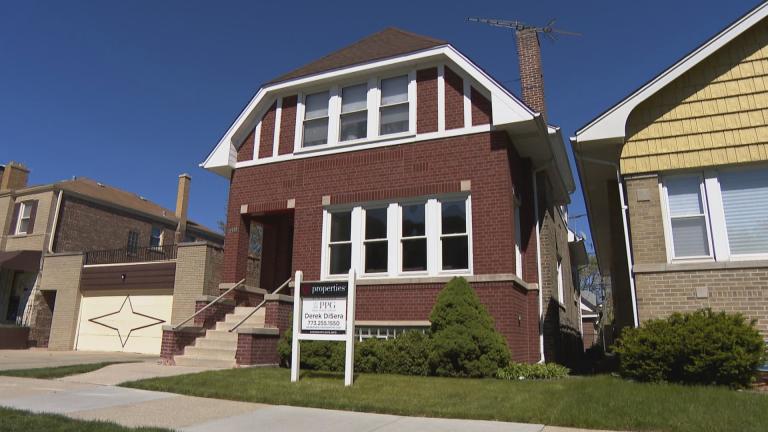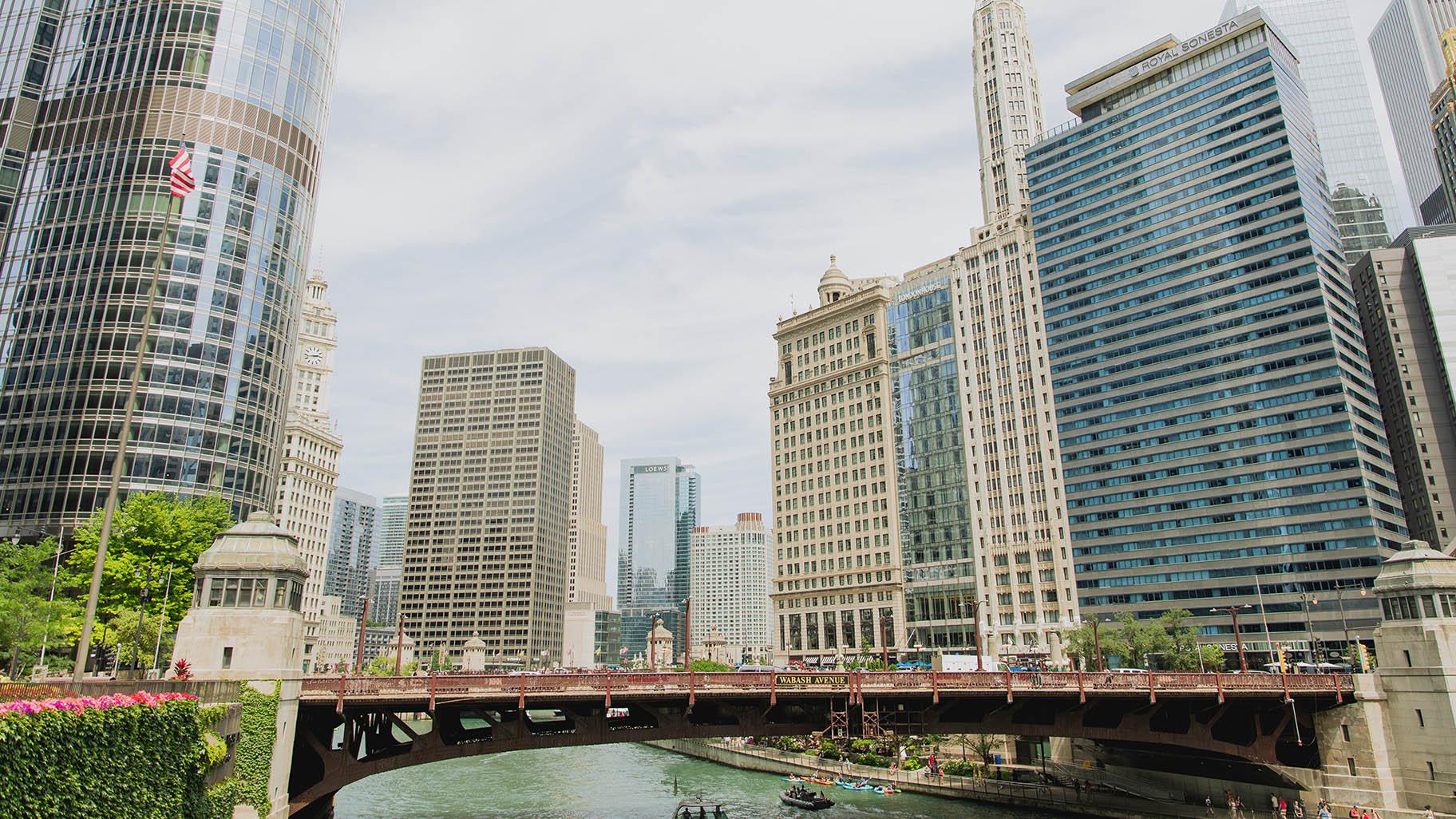 (Michael Izquierdo / WTTW News)
(Michael Izquierdo / WTTW News)
Chicago has been a self-proclaimed sanctuary city for more than 38 years, with five mayors vowing to shield all immigrants in Chicago from federal agents, regardless of whether they are citizens, permanent residents or asylum seekers.
While Mayor Brandon Johnson says Chicago will remain a welcoming city for immigrants, those protections are nevertheless facing intense scrutiny as city officials struggle to house, feed and care for the more than 18,500 people who have made their way to Chicago from the southern border as of Oct. 19. Many reached Chicago on buses paid for by Republican Texas Gov. Greg Abbott as part of a concerted effort to damage President Joe Biden’s chances for reelection and divide Democratic voters.
Here’s a breakdown of what it means that Chicago is a sanctuary city and how that status has fueled the debate over Chicago’s newest arrivals.
Wait, Chicago has been a sanctuary city for how long?
Former Mayor Harold Washington issued an executive order on March 7, 1985, that prohibited any city employee from asking about or assisting an investigation of the “citizenship or residency status of any person” unless ordered to by a court or federal law. In addition, the order prevented city benefits from being denied to anyone because of their citizenship status.
What prompted Washington to act?
Washington, a Democrat, issued the order to protest the decision by the administration of President Ronald Reagan, a Republican, to direct federal officials to question people seeking city services about whether they are citizens and conduct random searches of city records to identify undocumented immigrants.
Why didn’t Washington ask the City Council to enshrine those protections into law?
In 1985, the City Council was mired in gridlock amid acrimony between Washington, Chicago’s first Black mayor, and a block of White alderpeople led by former Alds. Ed Vrdolyak and Ed Burke. Washington never asked the City Council to ratify that order – but the City Council never attempted to exercise its authority to overturn the order, either.
On April 25, 1989, former Mayor Richard M. Daley reissued Washington’s executive order, and it would remain in place until 2006. However, in 1992, Daley said his order did not prohibit city employees from providing immigration information to federal officials if they were involved in serious crimes. That opened what many immigration advocates believed was a major loophole in protecting undocumented immigrants in Chicago from deportation that would remain wide open for more than 30 years.
What changed in 2006?
It was déjà vu all over again. Just like in 1985, federal officials pressed Daley, a Democrat, to help them enforce federal immigration laws, this time at the request of President George W. Bush, a Republican. In response, the Chicago City Council ratified the identical executive orders issued by Washington and Daley into law via a proposal that came to be known as the Welcoming City ordinance.
So that’s why sometimes people say Chicago is a welcoming city as well as a sanctuary city?
Right. They are the same thing.
How was that ordinance different from the executive orders?
The ordinance set clear guidelines for the Chicago Police Department, which was being asked by federal officials to take a more active role in enforcing federal immigration laws. The ordinance banned officers from arresting anyone just because they were suspected of being undocumented.
The ordinance also directed Chicago Police Department leaders to ignore requests from immigration authorities to detain undocumented people who had been arrested for an additional 48 hours to allow federal officials to start deportation proceedings.
Was the debate over protections for immigrants intense?
No. The vote was unanimous, with City Council members saying they were spurred to act at a time of increasing threats against immigrants. That left many immigrants unwilling to cooperate with Chicago Police officers and risk being deported. Those rules were in place until 2012, when former Mayor Rahm Emanuel asked the City Council to revise the law.
What prompted Emanuel to propose changing the ordinance?
Emanuel’s ex-boss, former President Barack Obama, had ramped up efforts to enforce federal immigration laws with the help of local law enforcement agencies. The City Council agreed to change the ordinance to allow Chicago Police officers to turn over undocumented immigrants to federal law enforcement officials if police brass believed the undocumented immigrant posed a threat to public safety or had been identified as a gang member. Emanuel touted that change as an expansion of protections for law-abiding immigrants, but immigration rights advocates denounced what came to be known as a “carveout.”
Nevertheless, Emanuel celebrated the change, saying Chicago was “the most immigrant-friendly city in the country.”
OK, that brings us to 2012. What happens when Donald Trump becomes president in 2017?
One of Trump’s first acts as president was to sign an executive order outlining a plan that was designed to cost Chicago millions of dollars if it did not repeal the Welcoming City ordinance. Instead, the City Council voted to reaffirm the measure without making any changes to it.
Support for Chicago’s status as a sanctuary city solidified in the face of repeated threats from Trump, who repeatedly vowed to deport thousands of undocumented immigrants.
Despite those threats, Emanuel remained defiant, and defended the city’s status as a sanctuary city in court, ultimately winning a total victory that was upheld by the U.S. Supreme Court in 2020.
The Welcoming City ordinance was revised again in 2021. What changed?
With Trump out of office, then-Mayor Lori Lightfoot made good on campaign promises to expand protections for undocumented immigrants in Chicago. Current law bans Chicago police officials from cooperating with federal immigration agents in all cases – undoing the change made by Emanuel in 2012, much to the relief of immigration advocates.
Hold on, I’m confused. What does Chicago’s status as a sanctuary city have to do with caring for the migrants now arriving in large numbers?
Nothing. Chicago’s status as a sanctuary city does not require it to encourage immigrants to move to Chicago nor does the Welcoming City ordinance obligate officials to use taxpayer funds to care for immigrants in Chicago.
In addition, the 18,500 migrants sent to Chicago so far are in the country legally after requesting asylum after fleeing persecution and economic collapse. The ordinance focuses on protections for undocumented immigrants, so it does not apply to any of the migrants.
However, Chicago’s long-standing promise to serve as a haven for immigrants made it a target for Trump, while he was president, and Texas Gov. Greg Abbott picked up where his political ally left off.
Who wants to repeal the Welcoming City ordinance?
Ald. Anthony Beale, whose 9th Ward is on the Far South Side, and Ald. Anthony Napolitano, whose 41st Ward is on the Far Northwest Side, have proposed asking voters in March to vote to ratify the Welcoming City ordinance. Napolitano is the only member of the City Council who is not a member of the Democratic Party, and Beale has repeatedly objected to efforts to spend taxpayer dollars on plans to care for migrants after decades of disinvestment on the South and West sides.
It is unlikely the City Council will agree to put that question to voters.
Does Mayor Brandon Johnson support ending Chicago's status as a sanctuary city?
No. Johnson has said he will not “flinch” in his support for Chicago’s newest arrivals. Their arrival is just the latest in series of waves of immigration that has shaped, and reshaped, Chicago and is central to the city’s identity, Johnson said.
Contact Heather Cherone: @HeatherCherone | (773) 569-1863 | [email protected]

